I picked up an extra fancy maple SMR from the Kibler folks. I’m wondering if anyone tried finishing a stock with the first stain being lye, then using the Iron nitrate over the lye? I’m looking for more of a red tint that the lye imparts to the stock. Not sure that would work, if not then I’ll just do the Iron nitrate and lay the lye on top of that.
-
This community needs YOUR help today. We rely 100% on Supporting Memberships to fund our efforts. With the ever increasing fees of everything, we need help. We need more Supporting Members, today. Please invest back into this community. I will ship a few decals too in addition to all the account perks you get.

Sign up here: https://www.muzzleloadingforum.com/account/upgrades -
Friends, our 2nd Amendment rights are always under attack and the NRA has been a constant for decades in helping fight that fight.
We have partnered with the NRA to offer you a discount on membership and Muzzleloading Forum gets a small percentage too of each membership, so you are supporting both the NRA and us.
Use this link to sign up please; https://membership.nra.org/recruiters/join/XR045103
You are using an out of date browser. It may not display this or other websites correctly.
You should upgrade or use an alternative browser.
You should upgrade or use an alternative browser.
Kibler Extra Fancy Stock Finish
- Thread starter acavdragoon
- Start date

Help Support Muzzleloading Forum:
This site may earn a commission from merchant affiliate
links, including eBay, Amazon, and others.
64Springer
75 Cal.
Lye solution will turn Cherry Wood reddish orange.
When I've put lye solution on Maple Wood things get brown quickly.
Do some testing in your barrel channel.
When I've put lye solution on Maple Wood things get brown quickly.
Do some testing in your barrel channel.
Great to know! I used the lye on my cherry Colonial that turned out okay. Somehow I was under the impression that it would be the same on the maple, by putting the aqua fortis on first then the lye. Should have asked for samples when I made my order. The barrel channel will work I guess.
Comfortably_Numb
The Evil Mike Brooks
I wouldn't use lye on maple.
LMF cherry stain added to tried and true varnish oil applied over aqua fortis. Yields a slightly reddish character to the finish. Sand back the AF so it doesn’t get overly dark, unless that’s the desired result.
Norman Brooks
45 Cal.
- Joined
- May 28, 2022
- Messages
- 9,118
- Reaction score
- 22,006
- Location
- Louisiana & My camp in Mississippi
I’d follow @akroguy and @Norman Brooks technique.
- Joined
- Nov 26, 2005
- Messages
- 5,018
- Reaction score
- 9,972
Hi,
Ferric nitrate dissolved in water is the same chemical solution as the stain we call "aqua fortis" minus most of the residual acidity. Here is sugar maple stained with ferric nitrate in water and blushed with heat.
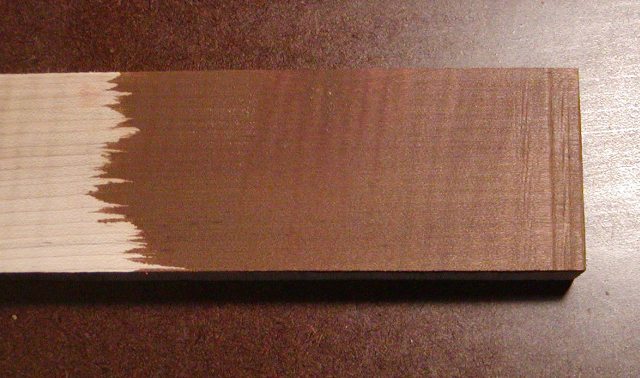
Here is that same piece then painted with lye water.
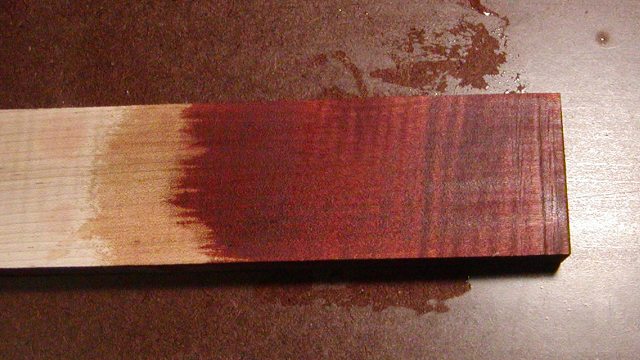
Here is the finished rifle.
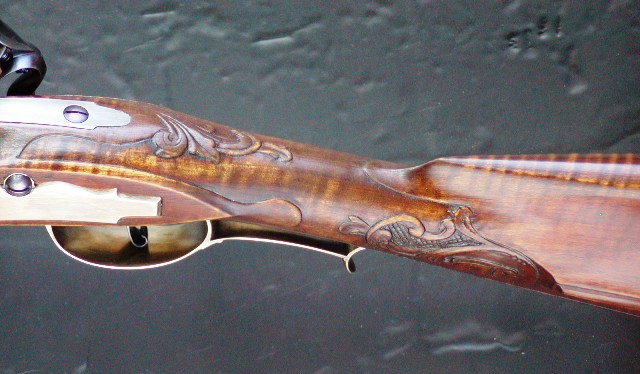
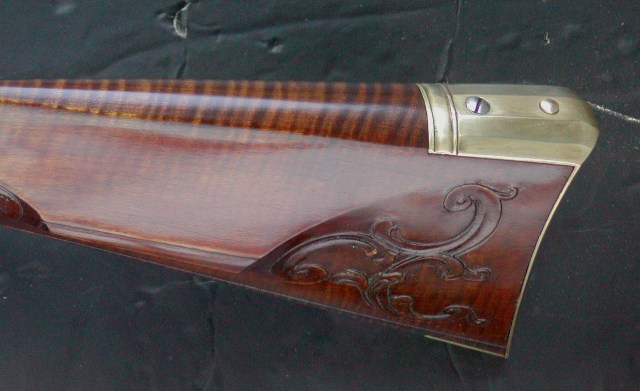
dave
Ferric nitrate dissolved in water is the same chemical solution as the stain we call "aqua fortis" minus most of the residual acidity. Here is sugar maple stained with ferric nitrate in water and blushed with heat.

Here is that same piece then painted with lye water.

Here is the finished rifle.


dave
- Joined
- May 28, 2022
- Messages
- 9,118
- Reaction score
- 22,006
- Location
- Louisiana & My camp in Mississippi
Learn something new every day @dave_person. That’s a good color with the lye.
Jason holgate
40 Cal
Great post
This is where I was going. I knew I read this process somewhere along the line. Dave have you done the reverse on the application? The lye first with the aqua fortis next, then the blushing?Hi,
Ferric nitrate dissolved in water is the same chemical solution as the stain we call "aqua fortis" minus most of the residual acidity. Here is sugar maple stained with ferric nitrate in water and blushed with heat.

Here is that same piece then painted with lye water.

Here is the finished rifle.


dave
- Joined
- Nov 26, 2005
- Messages
- 5,018
- Reaction score
- 9,972
Hi,This is where I was going. I knew I read this process somewhere along the line. Dave have you done the reverse on the application? The lye first with the aqua fortis next, then the blushing?
No, because I use the lye water to neutralize any residual acidity after blushing the ferric nitrate. Theoretically, you don't have to neutralize ferric nitrate after blushing because of the initial low acidity and the heat drives off the residual hydrogen ions. However, a basic solution (lye, ammonia, baking soda, etc) just assures no acids are left and the additional benefit of the lye is it reddens the color. Let me relate a story. I wanted to match the light orangey color of the original Edward Marshall rifle on my copy of it. I did all kinds of experiments on scrap wood using really dilute ferric nitrate stain. I thought I had it just right then I stained the gun. After blushing, it looked terrible, like a plain gray brown board sprayed with thin magenta paint. So I hit it with lye water and boom, the color I wanted appeared immediately. Here is that gun.
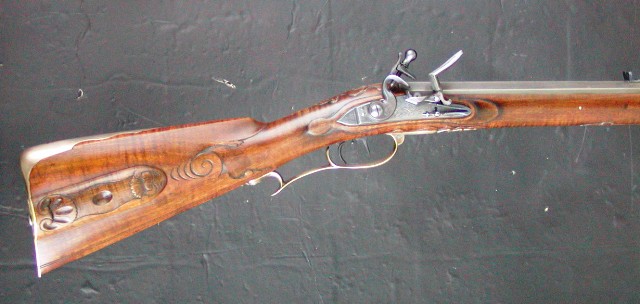
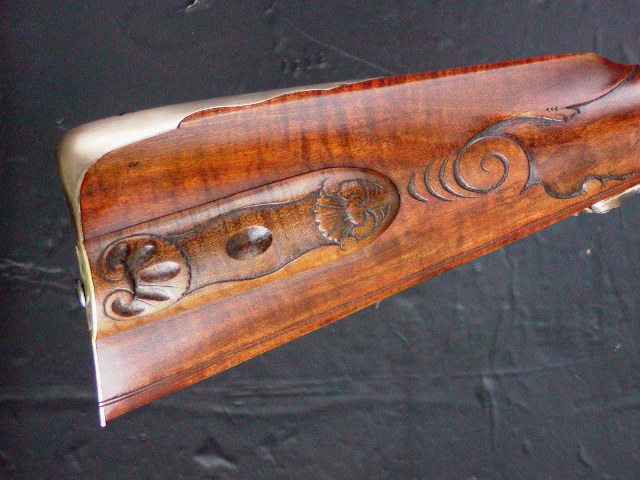
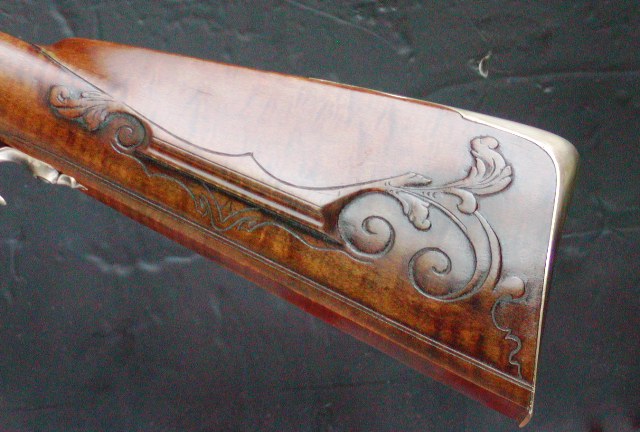
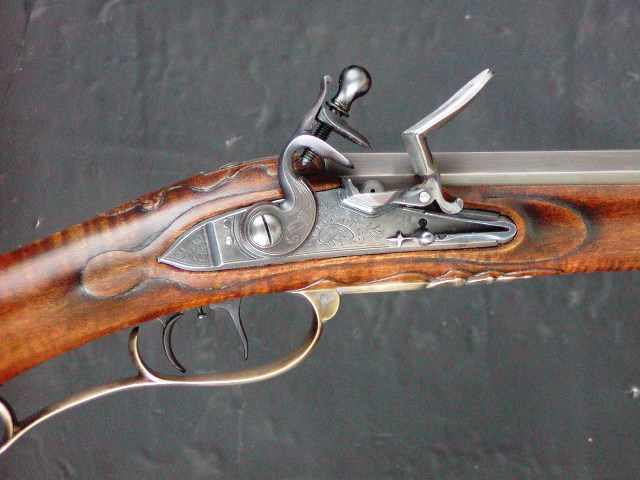
dave
Comfortably_Numb
The Evil Mike Brooks
Well, I learned something about lye I would have never used it until seeing your results.Hi,
No, because I use the lye water to neutralize any residual acidity after blushing the ferric nitrate. Theoretically, you don't have to neutralize ferric nitrate after blushing because of the initial low acidity and the heat drives off the residual hydrogen ions. However, a basic solution (lye, ammonia, baking soda, etc) just assures no acids are left and the additional benefit of the lye is it reddens the color. Let me relate a story. I wanted to match the light orangey color of the original Edward Marshall rifle on my copy of it. I did all kinds of experiments on scrap wood using really dilute ferric nitrate stain. I thought I had it just right then I stained the gun. After blushing, it looked terrible, like a plain gray brown board sprayed with thin magenta paint. So I hit it with lye water and boom, the color I wanted appeared immediately. Here is that gun.




dave
Is that a chambers Eddie Marshall or a one off? Which lock. I don't recognize it.
Wow! Nice work Dave! Okay I’ll do mine the standard way. Actually the red tint is not bad at all.Hi,
No, because I use the lye water to neutralize any residual acidity after blushing the ferric nitrate. Theoretically, you don't have to neutralize ferric nitrate after blushing because of the initial low acidity and the heat drives off the residual hydrogen ions. However, a basic solution (lye, ammonia, baking soda, etc) just assures no acids are left and the additional benefit of the lye is it reddens the color. Let me relate a story. I wanted to match the light orangey color of the original Edward Marshall rifle on my copy of it. I did all kinds of experiments on scrap wood using really dilute ferric nitrate stain. I thought I had it just right then I stained the gun. After blushing, it looked terrible, like a plain gray brown board sprayed with thin magenta paint. So I hit it with lye water and boom, the color I wanted appeared immediately. Here is that gun.




dave
- Joined
- Nov 26, 2005
- Messages
- 5,018
- Reaction score
- 9,972
Hi Mike,
The EM rifle is one off made from a blank. The lock is an M&G Albrecht that I completely worked over including welding on a pan bridle.
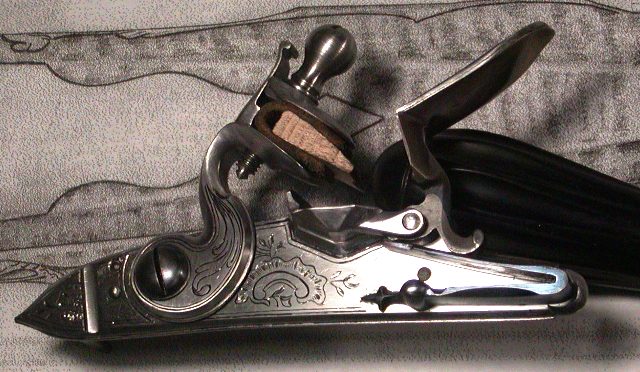
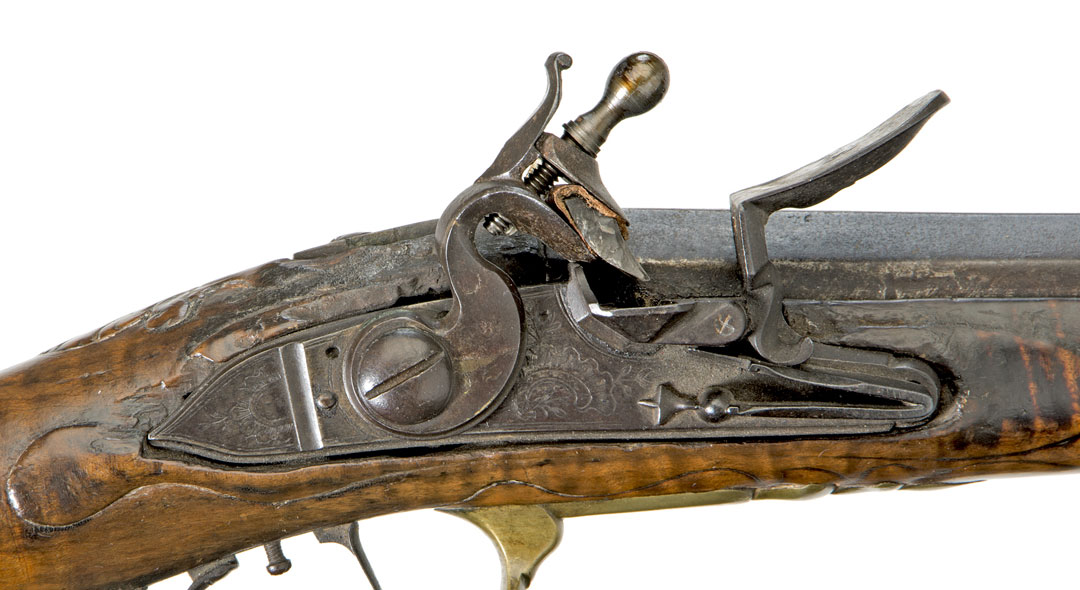
dave
The EM rifle is one off made from a blank. The lock is an M&G Albrecht that I completely worked over including welding on a pan bridle.


dave
Comfortably_Numb
The Evil Mike Brooks
Ok, got it. The lock looks excellent.
I’ve heard of oak being fumed with ammonia vapors to darken it. Don’t know if it would work with maple. If you want a maple sample to experiment with, the block at the butt end of the stock an breach end of the barrel in the shipping crate is maple. Least it was with my kits.
I’m going to check that out, never thought about the shipping crate having those items as samples. Thanks!
Mike in FL
45 Cal.
Front sight on backwards? Even so, 'tis gorgeous.Depending on how red you want it you can mix LMF American Walnut and LMF Cheery. This is how red this one turned out.
Norman Brooks
45 Cal.
It was a big rectangular that I filed in when I sighted it in. Should have filed it in the other direction. It happens.Front sight on backwards? Even so, 'tis gorgeous.
Similar threads
- Replies
- 16
- Views
- 717
- Replies
- 3
- Views
- 351
Latest posts
-
-
1st Experiment with various forms of Tinder Fungus to fire Snap Locks
- Latest: Pukka Bundook
-
-
-
-
-
-
-
-




